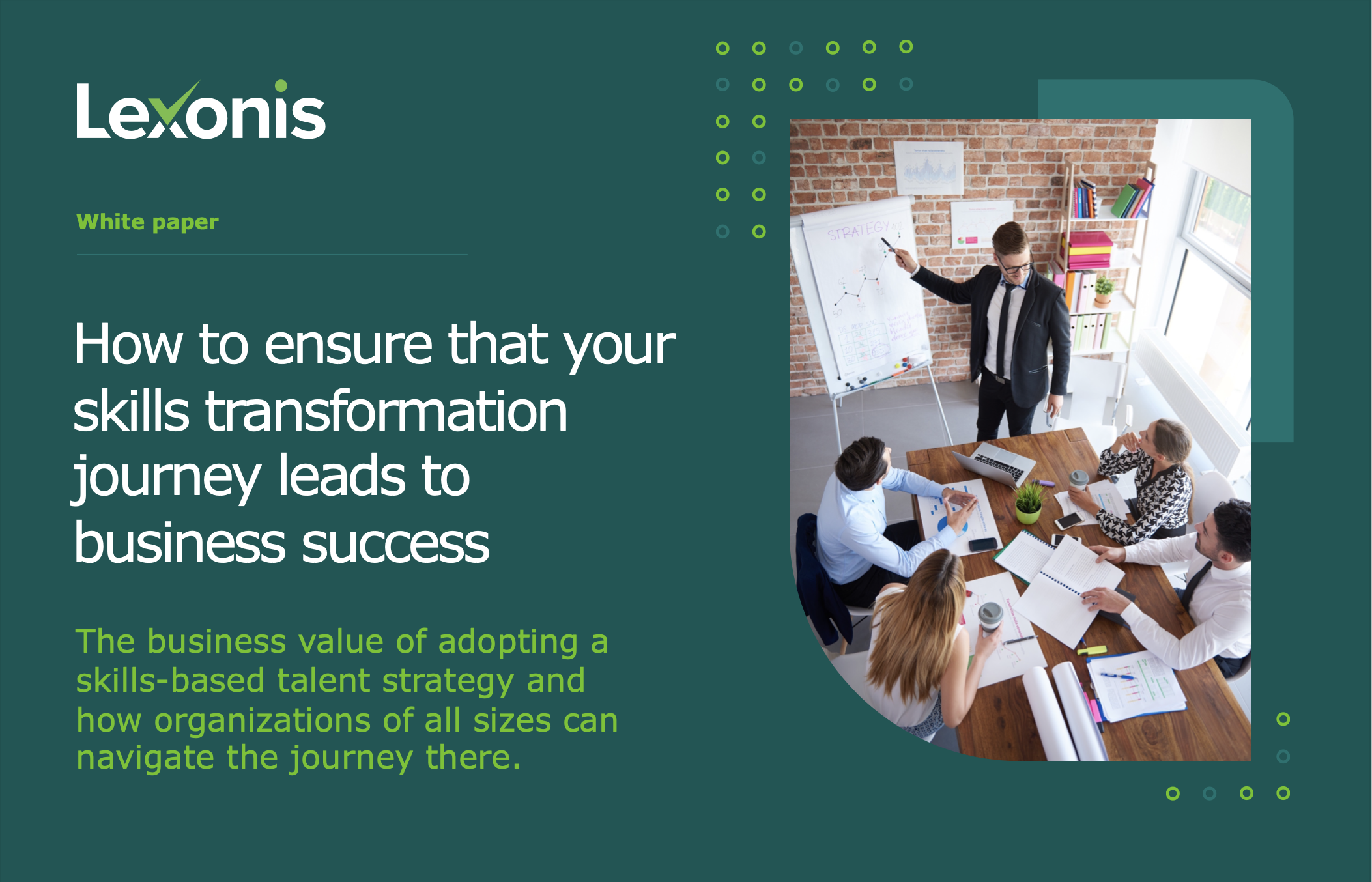Competencies can be a complex topic and elicit many divergent opinions. Where do you start? The intention of this blog post is to provide a gentle introduction for those who are interested in starting the competency journey and it will be followed by succeeding Lexonis blog posts covering competency-related topics.
What are competencies?
Here’s a startling truth – there is no industry standard definition of what a competency is. However, it’s important not to dwell too much on the differences in the definitions used, as most definitions will use some common words: skills, knowledge, ability.
For the purpose of this blog post, a competency is referred to as a combination of characteristics such as skills, knowledge, values and motives that define superior performance expressed in the form of behaviors that can be observed and measured.
What did you notice in the definition? The aim is to identify characteristics that contribute to superior performance. Not just adequate performance. Which organisation aims to be adequate?
Types of Competency
There are different types of competencies and different names can be used to describe the different types e.g. technical/functional competencies, skills, non-technical/behavioral competencies.
Functional competencies are generally technical in nature and pertain to specific functional or domain areas of the organization. Cross-functional competencies typically include behavioural competencies (sometimes referred to as “soft skills”) and those that are not specific to a domain; they have a critical part to play in supporting talent mobility and the creation of career development pathways in the organisation.
Typically, in the case of technical competencies the skills and knowledge characteristics are more pronounced, in the case of behavioral competencies, such as ‘Initiative’, characteristics such as values, traits, motives are more pronounced.
Why Competencies?
Bersin and Associates once referred to competencies as being “The Foundation of Talent Management”; their quotation went on to say that “Used across nearly all talent processes, competencies, therefore, serve as the foundation for process integration.” How so?
Think about some of the most critical Talent Management initiatives: Career Development, Resource Management, Succession Management, Recruitment, Learning and Development, Performance Management. In many organisations the vocabulary used to refer to a competency, will vary greatly from one of these processes to another. For example, what does ‘Problem Solving’ mean for the Recruitment function? How does it compare to the definition used by the Learning and Development or the Resource Management function? Are the definitions the same across the functions? They should be. Utilizing a consistent definition of the competency helps to bring together disparate tools and processes for “process integration”.
Which Business Questions do Competencies Answer?
The ability to refer to competencies consistently and also to quantify them by proficiency level, and then to capture them across the organisation can help to address questions that the organization’s business needs to answer, such as the ones shown below:
- What is the capability of our organization? How many people have each competency and what is their level of mastery?
- What competency gaps do we have which would prevent us from meeting our objectives as an organization?
- How can we identify what our highest priority learning and development needs are in order to run the business? What will it cost to deliver them?
- Which people have key competencies in the organization? How can we prepare a succession plan for their replacement or progression?
- How can we assign the right people on our projects? How do we find out who is the best match for each job, or which other roles would better suit them?
What’s in it For Me?
At Lexonis we have found that a successful competency initiative needs to provide benefits at a strategic, operational and individual level. For an implementation to be successful, it’s really important to to recognise that all participants need to understand the benefit they will receive, here are some examples:
As an Employee
- Better understanding of job competencies and levels
- Clear view of career development opportunities
- Individualized learning and development plans
- Internal and external recognition expertise
As a Manager
- Clear picture of employee competency requirements
- Visibility of teams’ strengths and gaps
- Basis for career development discussions
- Prescribe learning and development plans
- Identify subject matter experts for projects
As a Management Team
- Attract and retain competencies in a competitive job market
- Manage capability to meet project demand
- View capability to align with strategic objectives
- Meet regulatory compliance requirements
What Next?
If you would like to continue your competency journey with Lexonis, visit our learning hub, or contact us.


